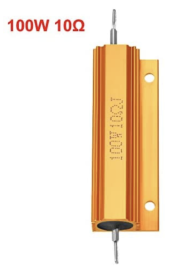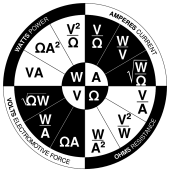Boondocker
New Member
- Joined
- Feb 1, 2021
- Messages
- 20
I was told by the guy at Watts 25/7 Growatt dealer that I could pre-charge my inverter capacitors with a lead pencil as my resistor, anyone ever heard of this?
The benefit being what, a solution on the fly?I was told by the guy at Watts 25/7 Growatt dealer that I could pre-charge my inverter capacitors with a lead pencil as my resistor, anyone ever heard of this?
Yeah, I'm gong to get a proper resister and know it's being done right. In Will Prowse's video, he uses the negative terminal but in other videos, I've seen they use the positive, can I assume that it doesn't matter? Also, Will doesn't say if the inverter is turned on or off while he's doing this, do you happen to know?The benefit being what, a solution on the fly?
Most of us want a precharge solution set up with instructions so that anyone not ‘in the know’ could power-up the system.
Totally turn-key and fail safe are the objectives in that case.
Telling someone to find a pencil and hold it against this and that for so many seconds/minutes before turning on the switch sounds like a recipe for a mishap (though if you’ve fried you power resistor and are desperate for a way to tear your system without causing a spark, sounds like it’s a promising back-up plan).
I just got a 2-way switch (connected to the + terminal) and wired input ‘1’ to the battery input (‘2’) through a power resistor.Yeah, I'm gong to get a proper resister and know it's being done right. In Will Prowse's video, he uses the negative terminal but in other videos, I've seen they use the positive, can I assume that it doesn't matter? Also, Will doesn't say if the inverter is turned on or off while he's doing this, do you happen to know?
Depends on the amount of capacitance your inverter has and how it boots up and if it is turned on.What's the best resistor for pre-charging my inverter when connecting it to the battery bank; 400ah at 24VDC, 100ohms, or bigger?
See:What's the best resistor for pre-charging my inverter when connecting it to the battery bank; 400ah at 24VDC, 100ohms, or bigger?


hi!!What's the best resistor for pre-charging my inverter when connecting it to the battery bank; 400ah at 24VDC, 100ohms, or bigger?


I have used an INCANDESCENT 75 watt light bulb to avoid sparking on initial charging of capacitors in my inverter. Light bulb connected in series with battery: either + or- side. I use + side because I’ve got - tied together and grounded( solar input-, inverter- and battery -). Regardless, insert the bulb in the circiut (disconnect 1 battery wire from inverter, connect light bulbs 2 wires , 1 to battery 1 to inverter)I was told by the guy at Watts 25/7 Growatt dealer that I could pre-charge my inverter capacitors with a lead pencil as my resistor, anyone ever heard of this?


